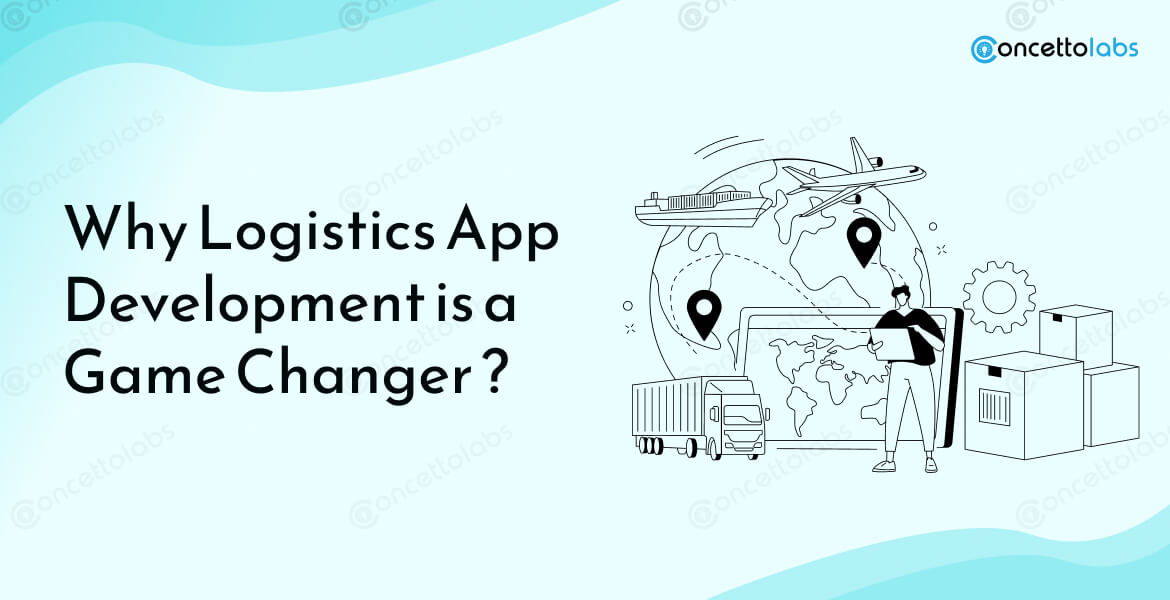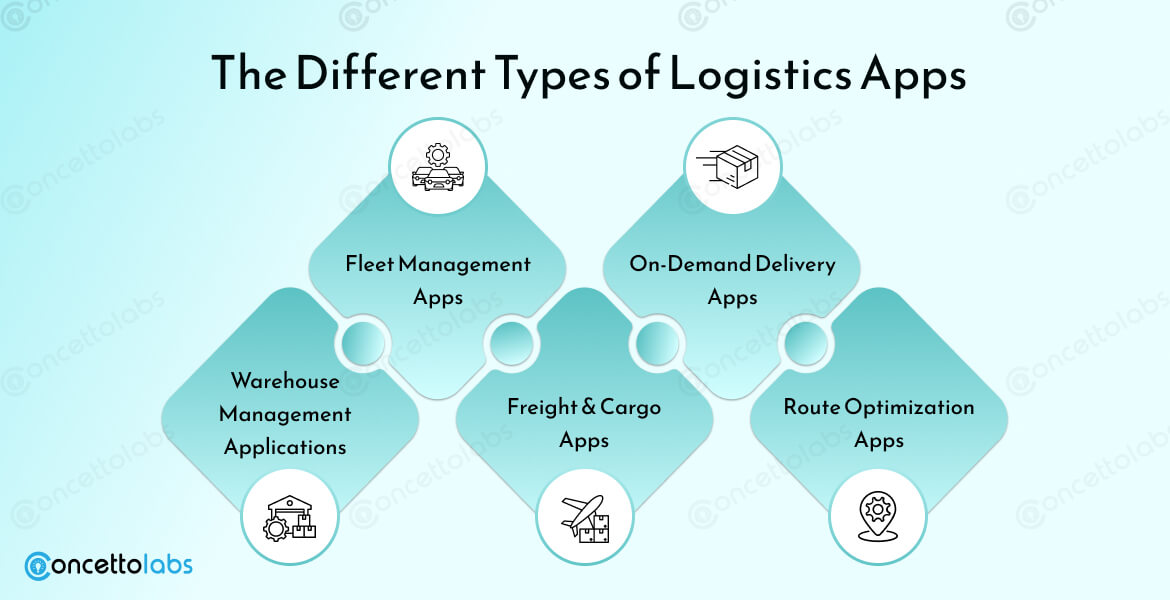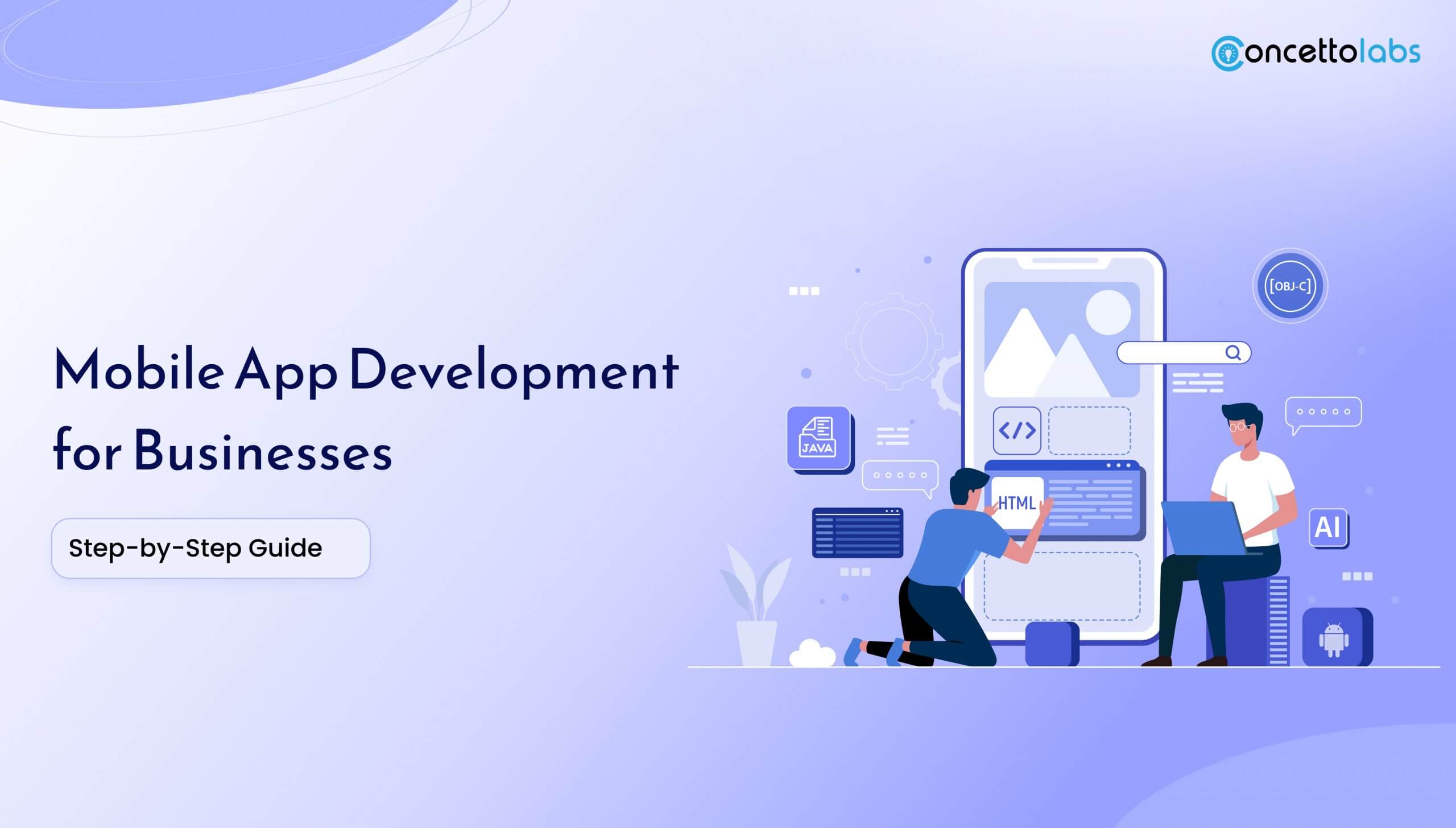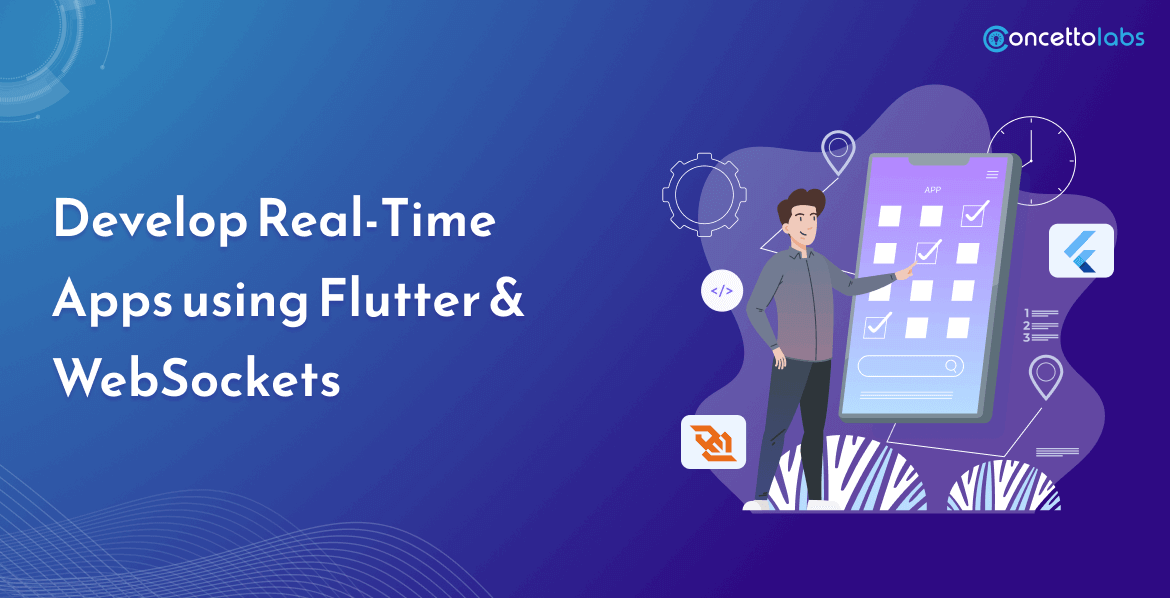
Quick Summary: The supply chain management of businesses is being transformed through logistics application development. Real-time tracking, predictive analytics, and automation driven by AI will improve operational efficiency, cut down costs, and improve customer satisfaction. It has become fundamental in the development of logistics applications by any business interested in rallying their future towards the development of such features as last-mile delivery, route optimization, and so on.
The logistics industry, in 2025, is on the threshold of a giant digital shift in the world. As logistics prices race up with fuel prices, rising e-commerce demands, and the complexity of the supply chain, smart software firms seek an alternative to remain in business. Here comes logistics application development, a smart alternative, basically a technological revolution that is transforming the way logistics enterprises perform.
The global logistics market is estimated to increase to 445.8 billion dollars by the year 2027, and a major portion of the increase in the market will be attributed as a result of both digital transformation and automation. Logistics applications are becoming a resource that may assist any business to have the advantages and better efficiency, visibility, and profitability by using real-time information and implementing AI, predictive analytics, and route optimization.
So, what makes logistics app development in 2025 a true game changer?
What is Logistic App Development?
As E-commerce and international trade have increased, it has also increased the on-demand delivery concept. The development of logistics apps has not only become a technology trend but also a business need. Logistics app development is the development of custom mobile and web applications to make logistics tasks, including transportation, warehousing, inventory tracking, and delivery management, efficient, automated, and streamlined.
- By 2025, logistics applications will become a highly digitized form of command center-sharing and utilizing AI, real-time map identification of vehicles, the IoT, and clouds to provide visibility of the whole supply chain.
- It will facilitate quicker, smarter, and data-based judgments throughout the whole logistics cycle.
- Such apps help logistics companies to effectively manage their fleets, track shipments in real-time, forecast faulty deliveries, and save operational expenses.
The Different Types of Logistics Apps

Logistics apps will no longer be universal by 2025; instead, they will be hyper-specific and perform various functions within the supply chain. This will assist companies to improve operations, reduce costs, and achieve real-time visibility. These are the key types:
1. Fleet Management Apps: These are real-time vehicle tracking apps that provide info on fuel consumption monitoring and optimal route optimization. In other words, it is a must-have for a company that deals with big fleets of vehicles.
2. Warehouse Management Applications: They do inventory management, barcode scanning, and updating stocks, and enhance the accuracy and the downtime as well.
3. On-Demand Delivery Apps: Suitable for E-commerce and last-mile delivery, these apps have the potential to schedule, track, and rate deliveries.
4. Freight & Cargo Apps: Freight and cargo apps match freight and shippers with carriers and provide both clear pricing and visibility of loads and documentation.
5. Route Optimization Apps: Route optimization apps rely on AI and GPS to calculate traffic, weather, and delivery windows and plan the most efficient routes possible.
All these kinds of logistics apps are notably important when it comes to making operations lean and improving the capacity of the supply chain.
Why Is Delivery App Development for Logistics So Important in 2025?
1. Real-time Tracking and Visibility
Those days are gone when one had to wait so long to get the delivery updates. In 2025, the world is shifting to real-time tracking in logistics as being standard rather than a premium. Let’s look at how logistics app is a boon for improved tracking and visibility:
| Feature | Why It Matters in 2025 | Real-World Impact |
| Live GPS Tracking | Provides instant visibility of shipment movement to businesses and consumers. | Reduces customer service complaints and delivery uncertainties. |
| IoT Sensors & Geofencing | Increases the accuracy of location and delivery updates. | Enhances transparency and reduces lost or delayed parcels. |
| Example – DHL | Adopted real-time tracking in their app. | Significantly reduced support queries and improved delivery experience. |
Trusted logistics app development companies like Concetto Labs provide the option of customized logistics app solutions, which also include an in-house GPS modular solution that gives precise shipment particulars in minute-by-minute developments
2. AI for Smarter Operations
The use of AI in building apps in logistics is transforming the decision-making process along with the supply chains.
| AI Capability | Functionality | Business Value |
| Demand Forecasting | Predicts inventory needs and replenishment timing. | Reduces stockouts and overstocking |
| Delivery Time Estimation | Analyzes traffic, weather, and driver behavior. | Enhances planning and customer satisfaction |
| Example – Amazon AI Robots | Deploying 1 million AI-powered robots. | Improves warehouse efficiency and last-mile delivery automation. |
As a competitive advantage to companies, the use of AI in logistics is not an option anymore, but is a must.
3. Route Optimization
One of the most expensive parts of logistics is fuel. Logistics apps have the power of route optimization, which allows dynamic route planning.
| Optimization Feature | How It Works | Benefits |
| Dynamic Route Planning | Plans delivery routes depending on real-time traffic and road closures. | Lowers the use of fuel and enhances punctuality. |
| Machine Learning Algorithms | Learn from delivery patterns to suggest the best routes. | Cuts operational costs significantly. |
| Concetto Labs Integration | Provides a route optimization module in custom apps. | Helps drivers make smarter decisions in real-time |
Research indicates that the market with the largest share of route optimization is created by the logistics and transportation industries. Thus, route optimization has the capability of reducing the cost of operations.
4. Predictive Analytics for Proactive Logistics
Logistics predictive analytics allows the company to see the outlook of the future, predict future failure, and even prevent risks.
| Predictive Feature | Purpose | Results Achieved |
| Forecast ETAs | Provides the arrival time in the most precise manner. | Improves delivery planning and customer trust. |
| Risk Detection | Determines bottlenecks and warehouse problems in advance. | Limits disturbances and guarantees the continuation of the service. |
| Rescheduling Alerts | Suggest reschedules before delivery failure. | Increases on-time delivery rate and customer satisfaction. |
5. Seamless Last-Mile Delivery Solutions
The trend of last-mile delivery solutions has become a staple of customer satisfaction throughout the last year of 10-minute delivery.
| Last-Mile Feature | What It Solves | Customer Benefits |
| Real-Time Driver Updates | Keeps both the dispatcher and customer informed. | Prevents delivery confusion and delays. |
| AI-Based Adjustments | Optimizes delivery routes even during a run. | Maintains speed during peak hours. |
| Feedback & e-Signature | Captures customer confirmation digitally. | Builds trust and helps in quality improvement. |
Logistic apps offering last-mile delivery services to high-velocity e-commerce companies and food chains are a boon.
6. Logistics Automation Through Mobile Apps
In 2025, everything in logistics will be done with mobile applications, from scanning warehouses to documenting deliveries.
|
Automation Tool |
Function | Efficiency Gained |
| Barcode & QR Scanning | Enables fast item registration and tracking. | Reduces human errors and saves time |
| Auto Dispatching | Assigns tasks without manual intervention | Enhances delivery speed and accuracy. |
| Digital POD & Inventory Sync | Paperless delivery confirmation and stock updates. | Increases data accuracy and simplifies operations. |
7. Digital Transformation in Logistics
The concept of digital transformation in logistics is not only about technology but business model reinvention as well. The apps for logistics are at the heart of that change.
| Transformation Element | Integration Use | Operational Impact |
| Mobile ERP/CRM Integration | Syncs business systems with delivery apps. | Centralizes logistics data for better decisions. |
| Real-Time Dashboards | Offers live visibility to field teams. | Improves team coordination and delivery flow. |
| Fleet & KPI Reports | Managers access all data in one place. | Drives accountability and performance monitoring. |
8. High Logistics App ROI in 2025
The ROI made by logistics apps is high, with the application enabling streamlining of operations, lowering costs, and enhancing customer satisfaction.
| ROI Metric | How It’s Achieved | Effect on Business |
| Delivery Cost Reduction | Through route optimization and automation. | Boosts profit margins. |
| Lower Customer Churn | Due to enhanced user experience and tracking. | Increases repeat orders and loyalty. |
| Inventory Control | Real-time inventory tracking & sync | Minimizes wastage and improves turnover. |
To the startups operating in the logistics sector or otherwise, the investment in the development of smart applications is a boost to your ROI and business advantage.
Want a power-packed logistics app for your business?
Contact us now!
Logistics Apps with Advanced Tech Integrations
| Tech Name | Description |
| ML and AI | AI predicts delays of shipments using real-time data, whereas ML optimizes continuously the schedule of delivery by studying the routes of traffic and past records. |
| Augmented Reality | AR is visualizing logistics to enable packages to be processed by allowing warehouse employees to navigate layouts in real-time. |
| Internet of Things | The Internet of Things optimizes logistics solutions by enabling real-time tracking via the integration of GPS devices, sensors, and vehicle fleets. |
| Big Data Analytics | Tools based on big data analyze data in logistics and identify bottlenecks, demand, and determine optimized delivery routes. |
| Cloud Services | By using AWS, Azure, or Google Cloud, the flexibility and security of the infrastructure can be ensured, which gives the logistics apps the ability to balance the fluctuating loads. |
| Blockchain | Blockchain allows the safe and clear running of operations of all transactions, such as shipment dispatch to delivery. |
The Future of Logistics App Development
The future of logistics app development is mobile, autonomous, and artificial intelligence-driven. The next era in logistics technology is here, and it is a combination of mobile, AI, and autonomous functions. Whether it is a drone delivering packages to autonomous carriers and smart warehouses, the connection between all these new approaches will be in the hands of logistics applications that act as a central system of nervous logistics, managing all the operations seamlessly.
Expect some such trends as:
- Logistics voice commands
- Records of shipment on blockchains
- Automatic delivery fleets
A reputed logistics app development company like Concetto Labs is already working on developing a new-gen logistics app with advanced technologies that can place clients on the edge of innovation.
Conclusion
The logistics world by 2025 requires agility, intelligence, and digital accuracy. A bespoke logistics application is not merely a technology change, it is a survival through success strategy of the absolute basics of being at the top.
Being a freight aggregator, last-mile delivery startup, or even just an enterprise-level logistics business, collaboration with an experienced logistics app development partner, such as Concetto Labs, can transform the way you do business in this new digital age.
Let Concetto Labs create a personalized logistics application designed specifically for your objectives.Revolutionize your logistics strategy with a smart app.







 Indonesia
Indonesia
 Botswana
Botswana
 USA
USA
 Italy
Italy
 Panama
Panama




 USA
USA UK
UK Saudi Arabia
Saudi Arabia Norway
Norway India
India Australia
Australia